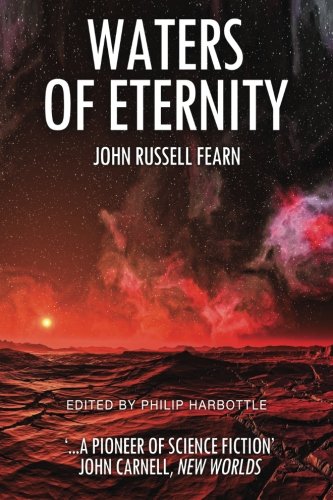As we previously reported, Telos Publishing has published The Fantastic Art of Ron Turner, written by the late John Lawrence, the artist’s long-time friend and agent. An absolute delight and a must for comic art and Dalek fans, now, author and archivist Philip Harbottle, who was involved in this book’s production, has published a full review of the new book as a new episode of his highly recommended 1950s British Science Fiction series on YouTube, and talks about its development, and his own friendship with John and Ron.
Running to almost 400 pages, you can order a copy direct of The Fantastic Art of Ron Turner from the publisher here.

The 77th videocast from Phil discussing British Science Fiction, he first outlines the history of Telos Publishing, set up by David Howe, Mark Stammers and Stephen James Walker in 2000, before launching into his appraisal of the new heavily-illustrated coffee-table-style art book, a project first suggested to the independent publisher by artist Martin Baines.
John Lawrence worked on assembling material about artist Ron Turner’s long career as much-admired illustrator and comic artist for over 20 years, and was keen to see the book in print. He and the Telos team quickly agreed on a format, and John then set to work preparing and refining his manuscript.
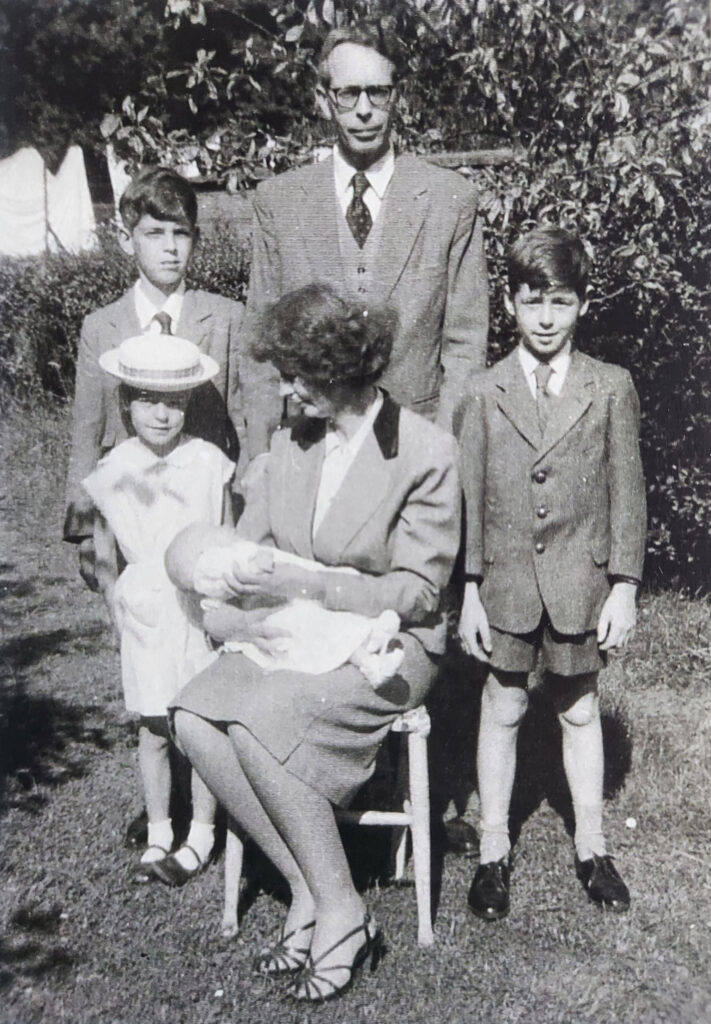
“John and I had first met in 1981, and as mutual fans of Ron Turner we soon became firm friends,” Phil relates. “My involvement with Turner and John has been covered in several of my earlier videos. After Turner’s agent Gregg Hall retired due to ill-health, and Turner appointed John as his agent in 1984, we formed a partnership to publish new comic books and graphic novels for Ron to illustrate, for which I wrote the scripts. I had also been assisting John on his planned biography of Ron Turner for many years, and since I had become a literary agent, he asked me to act for him should the book be commissioned. He informed me of Telos’ interest, and he set to work in earnest on his biography.”
Sadly, John Lawrence died before The Fantastic Art of Ron Turner could be completed, but he had managed to write a near-complete draft of his manuscript, and his family asked Phil if he would ensure that the book could still be published, which he was happy to do.

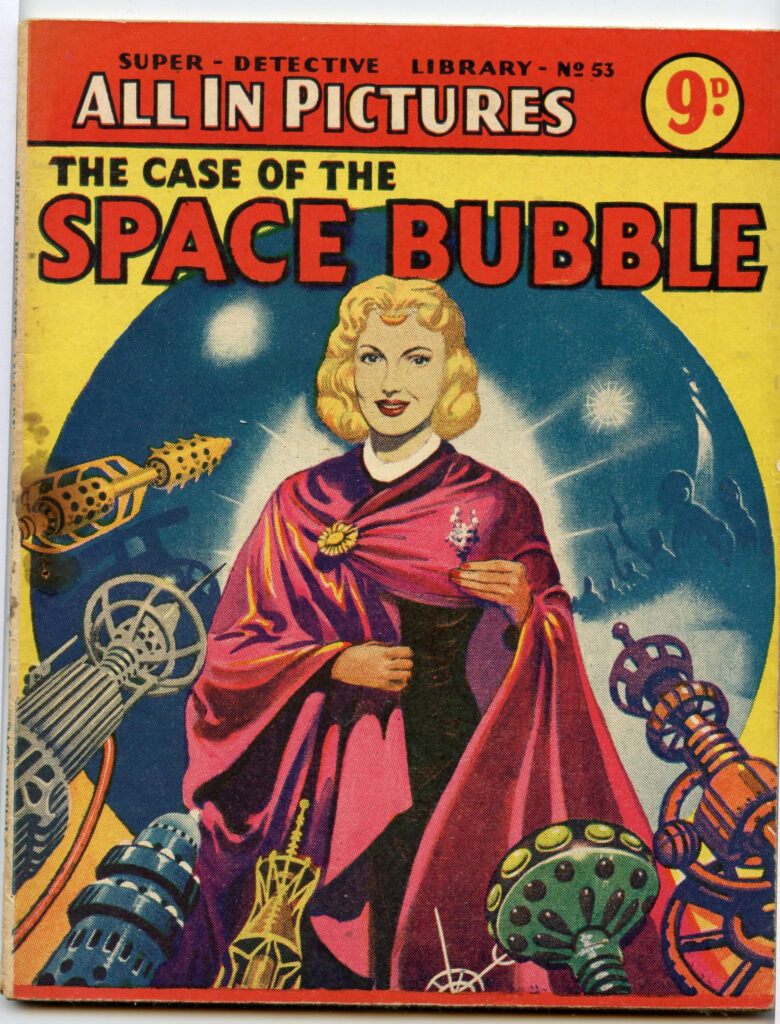
“I then set about tracing Ron Turner’s own family to get their contributions and family photographs for the book, which I was then able to complete,” he explains.
Working with Stephen James Walker, Phil made his own near-complete collection of Ron’s work available for the illustrations, and also liaised with John’s family to access his own even more complete collection for items I did not have. The result of those combined efforts has finally been published.
This is the first-ever comprehensive biography and bibliography of artist Ron Turner and in it, John tells the story of Turner’s lifelong dedication to producing quality artwork. A journey through Turner’s life, from his birth in 1922 to his death in 1998, it details his career as an artist.
“For decades, the full extent of his mostly anonymous work had been shrouded in mystery, as had been the man himself,” Phil notes. “That would only begin to change when John traced and met Turner, eventually becoming his agent. The story of how this came about is vividly described in John’s book, which also reveals the lifelong incredible dedication of John Lawrence himself to discovering – and later promoting – Turner’s artwork.
“The book is in two parts. Book One, which runs to 15 chapters, is a fascinating, extensively illustrated biography of Turner, from his earliest days, tracing his career up to 1980. It includes the memoirs of Turner’s four children paying tribute to their father, with never before seen family photographs.
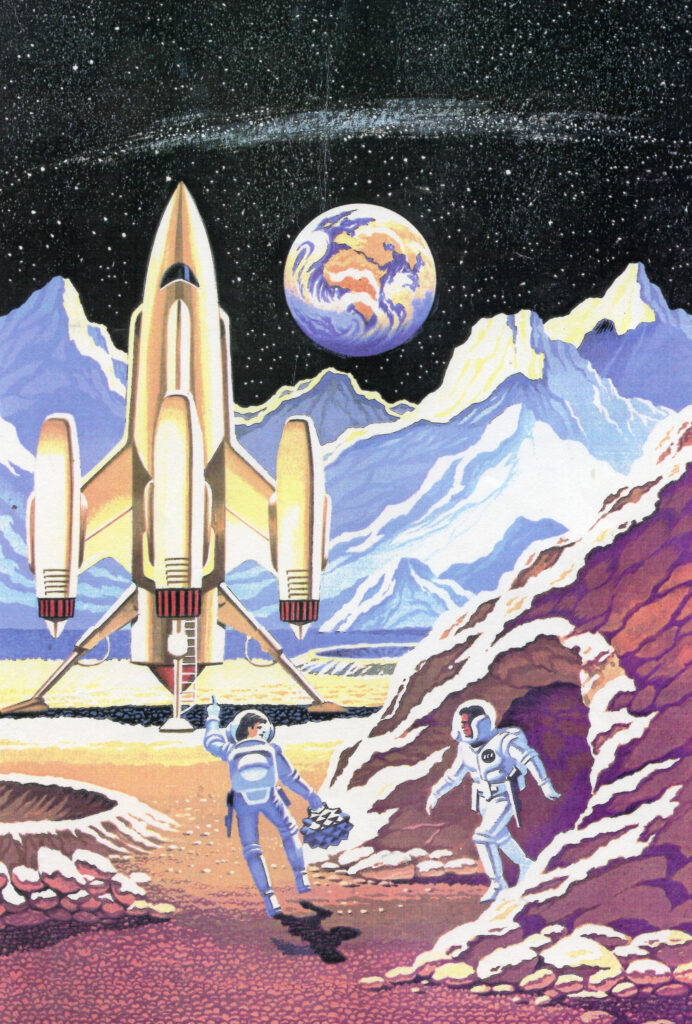
“John records that Ron displayed at school an aptitude for art and an interest in science, but it was after discovering during these formative years the novels of H.G. Wells, Jules Verne and the scientific romances of Edgar Rice Burroughs, that he quickly developed an interest for science fiction… Not just the stories, but the luridly imaginative cover artwork by Frank R. Paul and others ‘made more of an impression on his young mind and stimulated his interest sufficiently for him to grab a pencil and copy what he saw… but it was when he began not only to copy, but to embellish these sketches with ideas of his own, that his mother recognised a creative talent emerging and one which she actively encouraged him to develop.’
“The book abounds with behind-the-scenes details of his published work,” Phil enthuses, “describing how Turner’s first agent, Greg Hall, ensured that Turner remained in the background whilst he alone dealt with his publishers and editors. Hall was a shrewd and industrious agent, so that at first Turner’s career flourished and for twenty years he was inundated with work, quickly becoming the “go-to man” for science fiction (and science fact) illustration in books, magazines, and comics.
“Throughout a packed career that would eventually span five decades, Ron Turner provided illustrations for the covers of innumerable SF paperbacks, and popular comic strips, such as “Space Ace”, “Rick Random”, “The Daleks”, and in more recent years, “Judge Dredd”,” Dan Dare” and “Nick Hazard”. Over that time, Turner’s beautifully drawn and incredibly detailed renditions of spacecraft, aliens and futuristic machines, all convincingly and dramatically presented, earned him his well-deserved reputation as a master of SF illustration.”
The book documents how Ron’s career began to falter in the 1970s as the publishing industry changed, his career had begun to falter, his experience working on comics published by IPC far from the delight such work had been the decade previously. “IPC provided inferior juvenile scripts and, increasingly, non-science fiction work, together with gruelling deadlines that prevented Ron from maintaining his own high standards,” Phil notes. “The inside story on Ron’s association with IPC is revealed for the first time in John’s book, in fascinating detail.”
Perhaps Ron’s lack of work was, in part, because Greg Hall was so protective. “Turner himself was a mystery man,” Phil notes. “No publisher knew him, or knew of anyone who had ever met him and despite many efforts to track him down by various writers, editors and fans, all attempts had failed. Eventually, Ron began to lose science fiction work that should have been his, by right of his outstanding ability.
“Amongst those fans was John himself, and his book describes how, against all odds, he finally managed to break through that wall. He relates how he was able to track Ron down and become his friend, colleague and eventual working partner. John describes how he got to know Ron very well, and despite being a very private person the artist revealed to him a great deal about his life and work, which is included in the first part of this book.
“Most modern readers will be completely unaware of many of the details of Turner’s life and career, so practically all of the book’s revelations of Turner’s relationships with editors and publishers will be of absorbing interest. Why did Turner not draw all of the ‘Rick Random’ stories? Why was he taken off ‘Judge Dredd’? Why did IPC and Fleetway editors not use him on more serious science fiction strips, instead of making him waste his talents on children’s sports strips and comedic juvenile adventure stories? John’s narrative gives the answers to these and many more mysteries.
“The book is packed with scores and scores of beautifully reproduced full colour examples of his artwork… it is dazzlingly laid out with readable double columns of text, with the illustrations appearing alongside, in single or double column size (with many full page) right next to where John is describing their creation.”
Book 2, also 15 chapters, details how John, on becoming Ron’s agent in 1984, formed a partnership with Phil to publish new comic books and graphic novels for Ron to illustrate, giving him the opportunity to draw the iconic science fiction imagery he loved to create. They included three “Nick Hazard” stories, and other graphic novels and short stories, most notably Fearn’s The Golden Amazon and E.C. Tubb’s Kalgan the Golden.
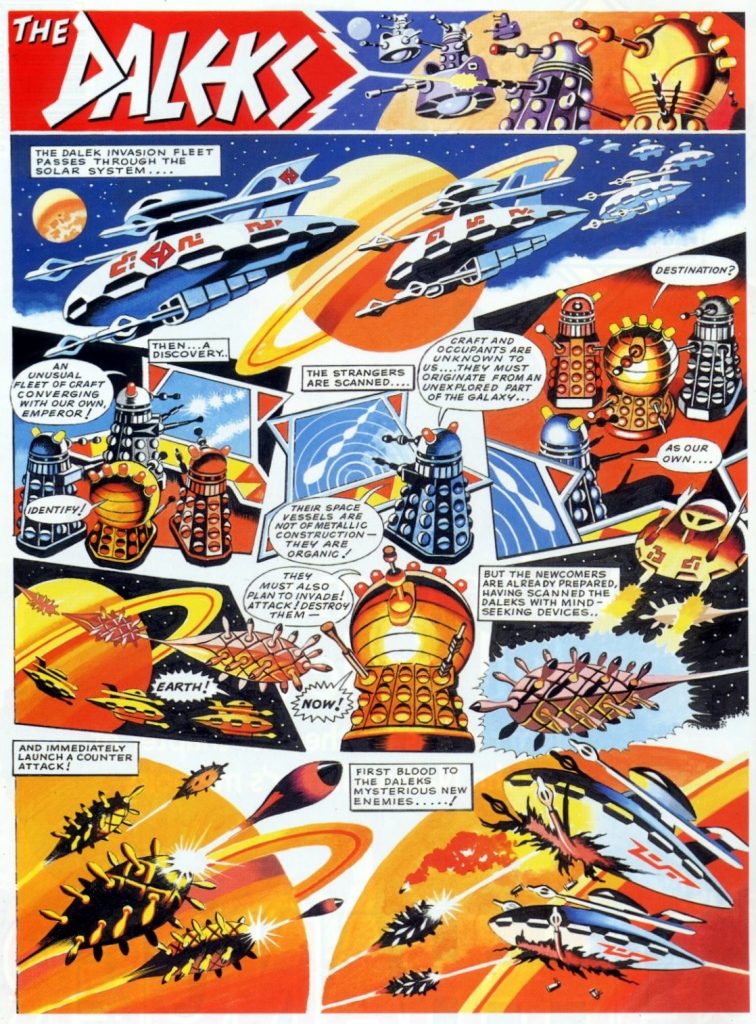
At John’s prompting, Ron also returned to painting his favourite colour strip, “The Daleks”, from new scripts especially written for him by John, with the work published by Marvel UK in Doctor Who Magazine. His earlier classic “The Daleks” work for TV Century 21 has since continued to be widely reprinted.
Phil also outlines how Ron also enjoyed working on other projects, including John’s own magazine, Space Ace(colourised by John Ridgway) and in Spaceship Away, where Martin Baines’ latest colourisation of “Kalgan the Golden” is currently being reprinted.
“Thanks to John, with whom I was privileged to work, Ron Turner’s last years were happy ones,” Phil says. “Ron died in 1998, but his artwork has continued to appear into the 21st century. Now, as agent for both the John Lawrence and Ron Turner estates, I am determined that the best of Ron’s work should continue to be reprinted. Interested publishers are hereby invited to get in touch!
“Now at last in this book, life-long fan John Lawrence movingly tells the story of his personal quest to uncover the man behind the mystery; his life and his work, much of it largely unknown to the artist’s fans. Crammed with many superb examples of Turner’s highly original artwork, and heartfelt tributes by his peers (including Dave Gibbons and others) as well as a full bibliography, this book is a ‘must-have’ for anyone interested in SF illustration, comics, or simply the life of a man with an incredible imagination.”
Phil also reveals The Fantastic Art of Ron Turner has inspired him to resume writing a new updated version of his own 1968 book, The Multi-Man, on the life and work of John Russell Fearn, for which he commissioned Ron Turner to paint this cover. “I hope to complete it in a few months. I invite any interested publisher to get in touch.”
Phil is also keen to pay tribute to the late John Lawrence, too, noting we see the author as his family knew him.
“It’s tragic that he did not live to see the result of his hard work, but I like to think he would be pleased with this book.
“At over 380 large size pages, it is well worth every penny of its cover price.”
• The Fantastic Art of Ron Turner | 384 Pages | Large format 11×8.5-format full colour hardback | ISBN 978-1845832353 | Also available from AmazonUK (Affiliate Link)
• In the United States it is available online and direct from the Telos website, and from Bud Plant at budsartbooks.com
Web Links
• Subscribe to 1950s British Science Fiction YouTube Channel here
• Video Review: The Fantastic Art of Ron Turner by John Freeman
• Vultures of the Void: The Legacy by Philip Harbottle (AmazonUK Affiliate Link)
Philip Harbottle presents a fascinating guide to British science fiction publishing history
• Buy Across the Ages by John Russell Fearn, adapted into comics by Philip Harbottle here from Lulu
A vintage comic strip by Philip Harbottle, adapting John Russell Fearn’s much admired SF novel Across the Ages, has finally been published – some sixty years after the now renowned author and publisher drew it (Read our news item about this here)
• Books edited or published by Phil Harbottle on AmazonUK (Affiliate Link)
• Rayguns and Rocketships by Rian Hughes, featuring many of the covers in Philip’s videocasts, is available to order now direct from Korero Press | Order it from AmazonUK (Affiliate Link) | ISBN: 978-1912740048
• Subscribe to 1950s British Science Fiction YouTube Channel
Categories: Art and Illustration, Books, British Comics, British Comics - Books, British Comics - Current British Publishers, Comics, Creating Comics, downthetubes Comics News, downthetubes News, Features, Other Worlds, Reviews
